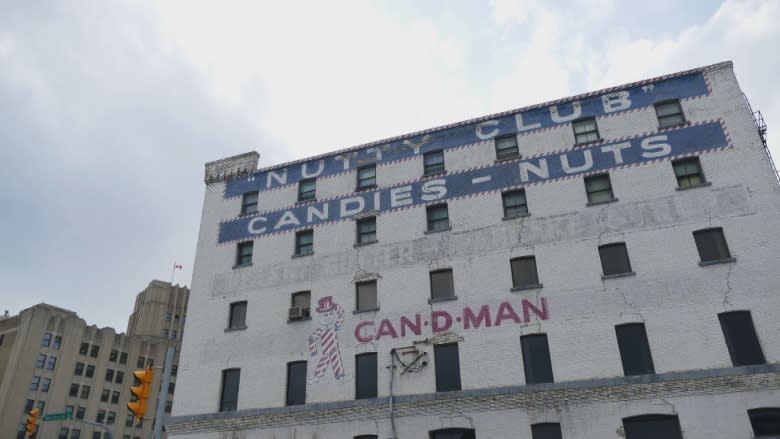Nutty Club poised to join exclusive company of its own
The Nutty Club may become an official part of Winnipeg's heritage.
The city's historical buildings committee has nominated The Nutty Club warehouse, formally known as the Scott-Bathgate Building, to be added to city's list of heritage buildings.
The five-storey brick-and-stone structure on Pioneer Avenue was built in 1905, at the height of the railway boom, when Winnipeg was one of North America's fastest-growing cities.
"Hundreds of new businesses organized to take advantage of the growth both in the city and in the region as a whole. Feeding the growing western Canadian population was an important activity and many distributors located in Winnipeg to take advantage of its geographic location and its favourable railway freight rates," researcher Murray Peterson writes in a building synopsis prepared for the historical buildings committee.
"Scott-Bathgate Company was one such company, translating its early success as a distributor into manufacturing that continues today."
The city wants to protect architectural elements on all four of the building's external facades, as well as the ornamental tin ceilings and heavy timber on the inside of the warehouse.
The building also happens to be a well-known downtown landmark.
"With its familiar painted logo gracing several façades, the warehouse at 149 Pioneer Avenue would be very well known to almost all Winnipeggers," Peterson writes.
The nomination for The Nutty Club comes before the historical buildings committee on Thursday, along with nominations for the Eaton Company printing plant on Galt Avenue, the W.J. Guest warehouse on Alexander Avenue and the Winnipeg Clinic on St. Mary Avenue.
The city describes the latter building, a modernist structure completed in 1946, as "one of Winnipeg's most recognizable and signature buildings, known affectionately as the 'Jetson Building' " because of comparisons of "its space-age look to the buildings found in an early 1960s cartoon about the future."



